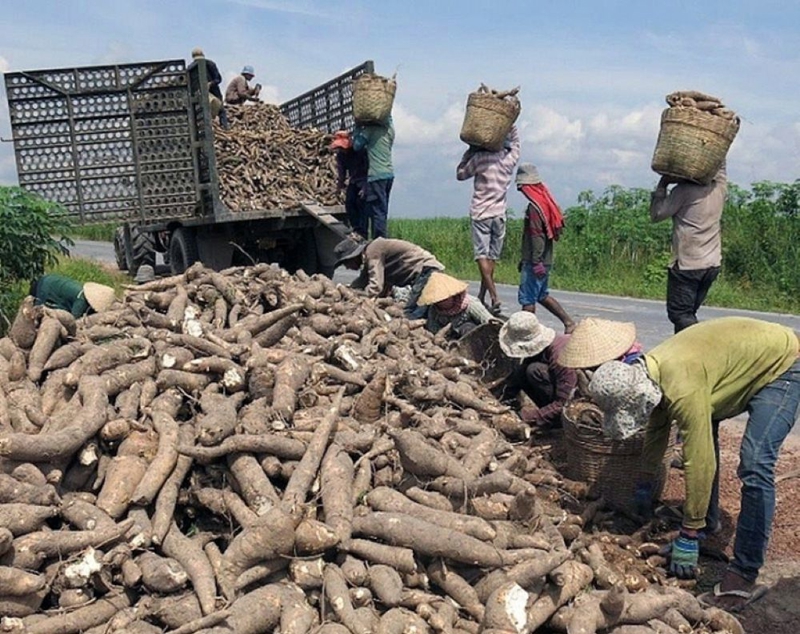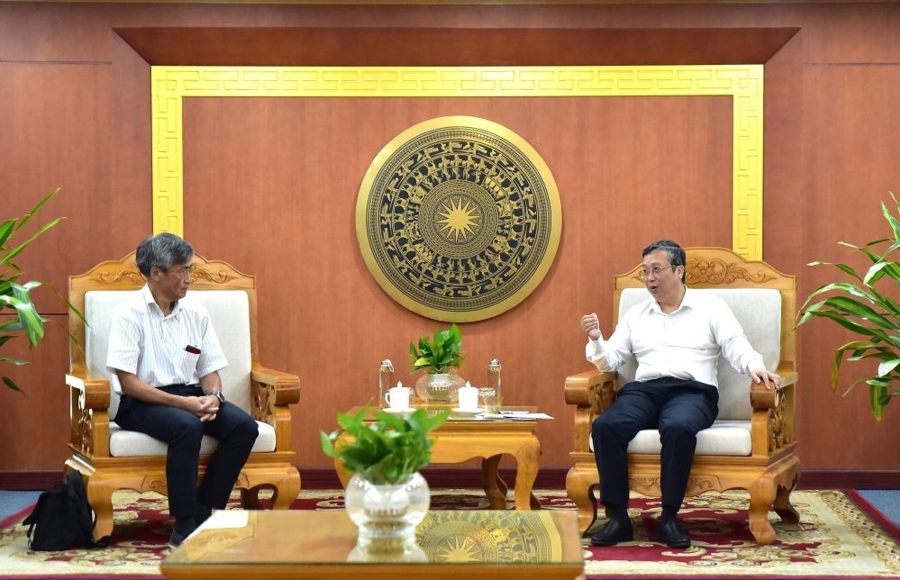
According to the Ministry of Agriculture and Environment, Vietnam’s export volume of cassava and cassava-based products in June 2025 reached 350,000 tonnes, with a value of USD 109.7 million. Cumulatively, in the first half of 2025, total export volume and value reached 2.3 million tonnes and USD 711.5 million, representing a 68.6% increase in volume and a 12.8% increase in value compared to the same period in 2024.
CHINA REMAINS THE PRIMARY EXPORT MARKET
Regarding export markets in the first half of this year, the Ministry noted that cassava and its products from Vietnam were mainly exported to China, which accounted for as much as 93.4% of total market share. Taiwan and Malaysia ranked next among significant consumers, each with a modest share of 1.5% and 1%, respectively. Compared to the previous year, export earnings to China rose by 10.5%, while Taiwan’s fell by 33.7%, and Malaysia’s rose by 13.4%.
“The average export price of cassava and cassava-based products from Vietnam in the first half of 2025 was USD 304.1 per tonne, down 33.1% from the same period in 2024.”
Citing data from the General Administration of Customs of China, the Ministry of Industry and Trade of Vietnam reported that, in the first five months of 2025, China’s total import volume of cassava and cassava starch reached 4.97 million tonnes, valued at USD 1.38 billion, up 79.7% in volume and 19.5% in value year‑on‑year. The average import price of cassava plunged by 33.5% year‑on‑year, to USD 277.7 per tonne.
For cassava chips, during the period, China imported more than 2.62 million tonnes, worth USD 510.59 million, representing a 118% increase in volume and 62.1% rise in value compared to the same period last year. The average import price into China was USD 194.5 per tonne, down 25.7% year‑on‑year. Thailand and Vietnam remained major suppliers, together accounting for 98.6% of the country’s total import volume. Of this, China imported 2 million tonnes of chips from Thailand, valued at USD 388 million, up 116% in volume and 60% in value, with the average import price from Thailand at USD 194 per tonne, down 25.9%.
In the first five months of 2025, China imported 585,918 tonnes of cassava chips from Vietnam worth USD 114.4 million, up 115% in volume and 61% in value. The average import price was USD 195.3 per tonne, down 25.3% year‑on‑year.
For cassava starch, in the first five months of 2025, China imported 2.35 million tonnes valued at USD 871.07 million, marking a 50.2% increase in volume and a 3.6% increase in value compared to the same period in 2024. Although volume rose substantially, turnover increased only modestly, due to sharply lower prices. The average import price stood at USD 370.7 per tonne, down 31% year‑on‑year.
Vietnam remained China’s largest supplier of cassava starch in this period, delivering over 1.14 million tonnes—equivalent to 48.84% of China’s total imports. Compared to the same period last year, imports from Vietnam nearly doubled (up 99%), with import value rising 36.1% to USD 409 million. The average unit price was USD 357.2 per tonne, down 31.6% year‑on‑year.
Thailand ranked as China’s second-largest cassava starch supplier, exporting 806,261 tonnes worth USD 322.2 million—up 13.3% in volume but down 19% in value year‑on‑year. Imports from Laos totaled 351,976 tonnes valued at USD 123.2 million, increasing 52.9% in volume and 4.6% in value, with the average price at USD 350.3 per tonne, down 31.6%.
IMPLEMENTING A CIRCULAR CASSAVA PRODUCTION MODEL
According to the Ministry of Agriculture and Environment, Vietnam now has 517,800 hectares of cassava, producing 10.5 million tonnes of fresh roots annually. The crop also generates USD 1–1.2 billion in export revenue per year. However, intensive and unsustainable cassava cultivation can lead to soil degradation, as cassava is a nutrient-draining crop with low ground cover, increasing susceptibility to erosion.
To address this, at the end of 2024, the Ministry approved a project to transform Vietnam’s cassava production system through circular farming and smart value chain management for cassava starch.
Recently, on July 9, 2025, Deputy Minister Hoàng Trung of the Ministry of Agriculture and Environment hosted a delegation from JICA, led by Professor Takuro Shinano, head of the Japanese project ‘Transformation of Vietnam’s Cassava Production System through Circular Farming.’

In his briefing at the meeting, Professor Takuro Shinano stated that the project is being implemented through the Japan International Cooperation Agency (JICA) and the Japan Science and Technology Agency (JST), and is divided into four components: selecting carbon sources that enhance soil carbon sequestration; developing field-based soil carbon measurement techniques; establishing integrated regenerative agricultural practices to increase soil carbon storage; and formulating a comprehensive strategy to supply sustainable starch based on regenerative agriculture packages that support carbon accumulation.
The project aims to build a solid technical foundation for Vietnam with the support and technology transfer from Japanese partners and the International Center for Tropical Agriculture (CIAT), paving the way for low-emission cassava production. The model is expected to be launched in September 2025, alongside a short-term training program in Japan for Vietnamese technical staff, and the installation of laboratory equipment and analytical and design facilities in Tây Ninh.
“The working delegation has coordinated with Tây Ninh’s Department of Agriculture and Environment to conduct field surveys and reselect the pilot site for the project model. The selected area features favorable natural conditions, adequate irrigation, labor safety, and strong potential for expansion,” Professor Takuro Shinano shared.
At the meeting, Deputy Minister Hoàng Trung highly appreciated the significance and objectives of the project, emphasizing its role in successfully developing the first circular farming model for cassava production in Vietnam. This initiative directly supports the Ministry's Sustainable Development Plan for the Cassava Sector through 2030, with a vision to 2050.
“A key point of the project is the integration of carbon measurement and verification (MRV) methods, along with smart monitoring and value chain management. The establishment of circular farming zones to transform cassava production systems will be carried out through the identification of carbon-storing cassava varieties, the development of regenerative farming methods, and the monitoring of soil and crop parameters using high-tech tools such as sensors, satellite data, and drones,” Deputy Minister Hoàng Trung stressed.
Source: vneconomy.vn




